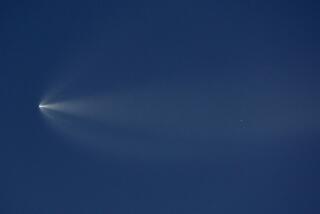SpaceX launches supplies for NASA with used booster rocket for first time

SpaceX used a previously flown rocket and spacecraft to launch supplies for NASA to the International Space Station on Friday morning, marking the first time the space agency — or any U.S. government agency — used one of the Hawthorne company’s used rocket boosters.
The first-stage booster used on Friday previously flew in June for another space station resupply mission. The Dragon spacecraft last flew in 2015.
Friday’s flight also marked the first time SpaceX has launched from Space Launch Complex 40 at Cape Canaveral Air Force Station in Florida since a launch pad explosion in September 2016 destroyed a Falcon 9 rocket and commercial communications satellite.
John Muratore, director of Complex 40, told reporters last week that the company spent about $50 million to repair and upgrade the launch pad, including new automated features to quicken turnaround time between launches and changes to the flame trench to enable longer rocket static fires.
The upgraded launch pad is now more similar to the pads the company uses at nearby Kennedy Space Center and at Vandenberg Air Force Base in California to allow for easier maintenance and operations, he said.
This was SpaceX’s fourth launch with a used booster and the second time with a used Dragon spacecraft. Reusing rockets is part of the company’s plan to dramatically decrease launch costs.
SpaceX landed its first-stage booster back on land at Cape Canaveral Air Force Station.
The launch was originally scheduled to occur earlier this week, but it was delayed twice — once for additional prelaunch ground checks and a second time to conduct full inspections and cleanings after SpaceX detected particles in the rocket’s second-stage fuel system.
Twitter: @smasunaga







